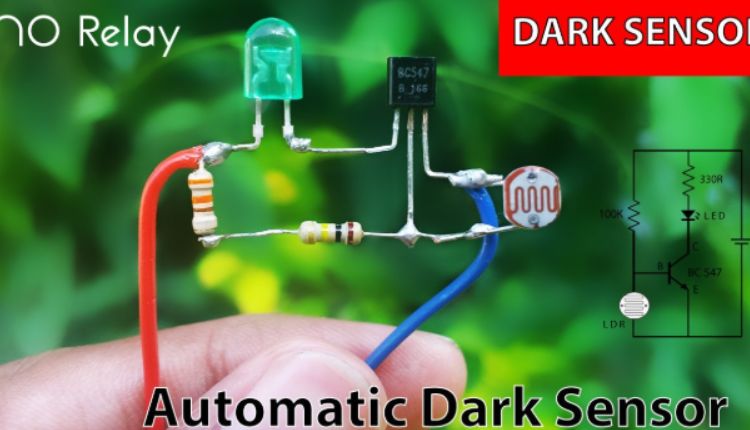Electronic circuits often rely on simple but powerful components to achieve automatic control. Two of these components, the transistor and the LDR (Light Dependent Resistor), are commonly used together to build light-sensitive circuits that can respond to changes in ambient light.
Understanding the Transistor
The transistor is a semiconductor device used to control electrical current. Its primary role is to function as a switch or amplifier. When used as a switch, the transistor allows or blocks current flow depending on the input signal at its control terminal.
There are several types of transistors, but the two most commonly used are:
- Bipolar Junction Transistor (BJT)
- Field Effect Transistor (FET)
Both types enable precise control of current in circuits. Transistors are found in computers, mobile devices, control systems, and nearly every modern electronic product.
Understanding the LDR
An LDR is a resistor whose resistance varies with the intensity of light falling on it. Under bright light, the resistance of the LDR drops, allowing more current to pass. In darkness, the resistance increases, restricting the current flow.
LDRs are widely used in light-sensitive applications such as:
- Automatic lighting systems
- Solar lighting
- Light meters
- Camera exposure controls
- Outdoor security systems
Building Light-Activated Circuits with Transistor and LDR
By combining a transistor with an LDR, you can build circuits that automatically respond to lighting conditions without any manual input. This combination forms the basis of many automatic lighting and sensing applications.
Basic Working Principle
- The LDR detects the surrounding light level.
- Changes in light intensity alter the LDR’s resistance.
- This change affects the voltage or current applied to the transistor’s control terminal.
- The transistor then turns the connected load (such as a lamp) on or off based on the signal from the LDR.
Example Application: Night Light Circuit
A simple night light circuit operates as follows:
- During the day, the LDR receives strong light, resulting in low resistance.
- The low resistance keeps the voltage at the transistor’s base low, keeping it switched off.
- As night falls, the LDR’s resistance increases.
- The rising voltage at the transistor’s base turns it on, allowing current to flow through the load and turning on the light.
This approach offers an efficient, low-cost solution for automatic lighting.
Benefits of Transistor-LDR Circuits
- Simple design with few components
- Low cost for mass production
- No microcontrollers required
- Highly reliable for outdoor and industrial use
- Energy-efficient automatic control
Real-World Uses
Transistor and LDR combinations are widely used in:
- Streetlights that turn on automatically at dusk
- Smart lighting in homes and offices
- Solar-powered garden lights
- Light-sensitive alarms and security devices
- Industrial systems that need light monitoring
Conclusion
The transistor and LDR combination shows how simple components can create intelligent, automatic control systems. By sensing light levels and controlling current flow, they allow devices to react to changing environments automatically.
These light-sensitive circuits are not only useful in hobby projects but are also widely implemented in commercial and industrial products. Understanding how transistors and LDRs work together opens the door to designing efficient, cost-effective solutions in countless electronic applications.

